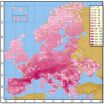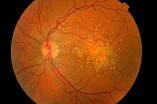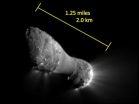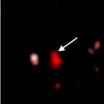The finding was made after scientists gained a new insight into therapies that target cancer-causing genes: They are successful not because they cause cell death directly, but instead because they slow the rate of tumor cell division. In other words, squelching messages promoting rampant cell growth allows already existing death signals to prevail and causes tumors to shrink.
The research highlights the emerging promise of applying mathematical and computational concepts to the study of complex biological systems.
"It's really just advanced high-school-level math," said associate professor of medicine and of pathology Dean Felsher, MD, PhD. "With some simple measurements, we found we can determine when a cancer is addicted to a particular cancer gene and will respond to therapy targeting that gene. I was astounded that it works."
Felsher, the leader of the Stanford Molecular Therapeutics Program, is a senior author of the study, which will be published Oct. 5 in Science Translational Medicine. He teamed up with assistant professor of radiology David Paik, PhD, an expert in computational biology and the co-senior author of the research. Felsher and Paik are both members of the Stanford Cancer Institute and Molecular Imaging Program; Felsher is also a member of Stanford's Center for Cancer Systems Biology.
Felsher and his colleagues used a computational biology approach to characterize a phenomenon called oncogene addiction, in which a cancer is dependent on the activity of one cancer-causing gene. Tumors that are dependent on a single mutated protein for their growth regress quickly when the activity of that protein, or oncogene, is blocked. However, because individual cancers reflect the interplay of hundreds or thousands of mutations within each cell, it's very difficult to tell which, or how many, tumors fall into that category.
"Lots of people will respond to therapy at first, but many times they don't get better," said Felsher. "With a new therapy, would you rather wait four months and say, 'Well, it's kind of working,' or is it better to know after a couple of weeks? We've found that the kinetics of regression can quickly predict whether the tumor is oncogene-addicted and likely to be treated successfully by targeted therapies."
As an oncologist specializing in the treatment of patients with lymphoma, Felsher has studied the concept of oncogene addiction in his laboratory for several years. He and his colleagues have developed a strain of laboratory mice that express a mutated version of an oncogene called K-ras when a chemical is added to the animals' drinking water. When the chemical is present, the animals develop lung tumors; when it is removed from the water, the tumors regress.
Felsher and Paik then used this experimental model of oncogene addiction in the current study. After inducing tumor formation in the animals, they stopped the expression of the oncogene and mapped the kinetics of the tumors' regression by precisely measuring death and survival signals. As previously reported, the cancers were undetectable within four weeks. But then they went one step further: to understand the changes in signals in the cancer they measured the phosphorylation status — shorthand for activity levels of certain important genes — of known signaling molecules involved in both cell survival and programmed cell death.
"Basically, we wanted to understand what happens to survival and death signals in the cell when you turn oncogenes off in an addicted tumor," said Felsher. "What we saw is that the levels of both sets of signals go down dramatically over time, but the signals that promote the survival of cancer cells dissipate much more quickly. When that happens, the balance tips toward cell death and the tumors get smaller."
Whether a cell lives or dies depends on a balance of signals. This research shows that oncogene-targeted therapies kill addicted tumors indirectly by decreasing survival signals, which allows the existing death signals to predominate.
Felsher and Paik then used a differential equation (a way to describe the relationship between interdependent variables over time) to correlate the changes in aggregate survival and death signals with the rate of tumor regression in the animals. They checked the accuracy of their equation by using it to predict the behavior of tumors in an experimental model of lymphomas in which the oncogene called Myc is activated. They also showed that the equation could identify whether a Myc-induced lymphoma would increase or decrease in size when additional pro-survival or pro-death pathways were activated.
Satisfied that the approach worked, the researchers then turned their attention to people with a type of lung cancer called adenocarcinoma. About 10 percent of these cancers have a mutation in a gene called epidermal growth factor receptor, or EGFR, and will respond to EGFR-targeted therapy.
"We realized that we could possibly use our equation to predict the kinetics of tumor cell elimination in cancer patients," said Felsher. "An oncogene-addicted tumor will regress at a specific rate and in a different way than a tumor that is not addicted, and patients with addicted tumors will have a better prognosis when the responsible oncogene is inactivated by targeted therapy."
Felsher and Paik discovered that their model could predict which of 43 patients enrolled in a clinical trial to test an EGFR-targeted therapy called erlotinib had tumors that were oncogene-addicted, and which did not, simply by charting the rate of tumor regression during the first four weeks of treatment. As they predicted, those patients with oncogene-addicted tumors fared better than their peers.
Although in this case the predictions were done retrospectively and therefore did not affect the patients' treatment, it's possible that in the future similar techniques could be used to quickly assess whether a therapy is likely to work for a particular patient, or if a different treatment should be tried. The researchers are now trying to extend their findings to include other cancers and additional variables.
"Our results may have provocative implications," said Felsher. "We've learned that a key point that many people don't realize is that it matters a lot how quickly the tumor is getting smaller. There's a certain rate of regression where you're never going to get rid of your cancer completely, but at another rate you will. For oncogene-addicted tumors, it's a very predictable kinetic response."
###
In addition to Felsher and Paik, other Stanford researchers involved in the work include Phuoc Tran, MD, PhD, now an assistant professor of radiation oncology at Johns Hopkins; Pavan Bendapudi, MD, now a resident at Massachusetts General Hospital; postdoctoral scholars H. Jill Lin, PhD, and Nicholas Hughes, PhD; graduate student Peter Choi; research associates Shan Koh and Joy Chen; and pulmonary fellow George Horng, MD, now at California Pacific Medical Center.
The research was supported by the Radiological Society of North America, the Francis Family Foundation, the Henry S. Kaplan Fund, the Howard Hughes Medical Institute, Stanford MIPS, the National Institutes of Health, the Leukemia and Lymphoma Society, Burroughs Wellcome Fund and Damon Runyon Foundation.
Information about the Department of Medicine, in which the research was conducted, is available at http://medicine.stanford.edu.
The Stanford University School of Medicine consistently ranks among the nation's top medical schools, integrating research, medical education, patient care and community service. For more news about the school, please visit http://mednews.stanford.edu. The medical school is part of Stanford Medicine, which includes Stanford Hospital & Clinics and Lucile Packard Children's Hospital. For information about all three, please visit http://stanfordmedicine.org/about/news.html.
PRINT MEDIA CONTACT: Krista Conger at (650) 725-5371 (kristac@stanford.edu)
BROADCAST MEDIA CONTACT: M.A. Malone at (650) 723-6912 (mamalone@stanford.edu)
END




